Just Do It! – A Reluctant Participant’s View of the Pinch-Hitter Course
A special supplement to Doug Ritter’s article “The Pilot’s Incapacitated – Now What?“


 My husband, Doug (AVweb's NewsEditor) tried for over a decade to get me to take a Pinch-Hitter course, to no avail. Ihad a million and one excuses and used them frequently. I just did not want to learn tofly or anything remotely connected with learning to fly. Flying was his thing. It was agreat way to get to Block Island or Sedona, but other than that, I was not interested. Ifelt very comfortable with flying, in fact I have come to prefer flying "CritterAirways" rather than the major airlines. But, I didn't want to do the flying myself.
My husband, Doug (AVweb's NewsEditor) tried for over a decade to get me to take a Pinch-Hitter course, to no avail. Ihad a million and one excuses and used them frequently. I just did not want to learn tofly or anything remotely connected with learning to fly. Flying was his thing. It was agreat way to get to Block Island or Sedona, but other than that, I was not interested. Ifelt very comfortable with flying, in fact I have come to prefer flying "CritterAirways" rather than the major airlines. But, I didn't want to do the flying myself.
I am lucky in that Doug has always wanted me to know and understand what was happening.When we fly together, I set the transponder code, help him with getting information out ofthe Flight Guide, and I'm a pretty good navigator. I can find my way around the sectionalsand Doug's teaching me how to use the GPS so I can always find the nearest landing fieldwith a bathroom. We all have our own priorities.
![]() On occasion, I've even taken the controls for just a fewseconds, but other than that, me learn to fly? No way. Well, to make a long story short, Ibecame the "guinea pig" for an assignment from one of Doug's editors.Personally, I think there was a conspiracy between them, but I finally had run out ofexcuses and found myself enrolled in AOPA's Pinch-Hitter course and being flown off to theannual AOPA Expo in Las Vegas a few years back. To use one of my favorite terms, I was nota happy camper, but being a typical type A, I was going to do my very best to succeed.
On occasion, I've even taken the controls for just a fewseconds, but other than that, me learn to fly? No way. Well, to make a long story short, Ibecame the "guinea pig" for an assignment from one of Doug's editors.Personally, I think there was a conspiracy between them, but I finally had run out ofexcuses and found myself enrolled in AOPA's Pinch-Hitter course and being flown off to theannual AOPA Expo in Las Vegas a few years back. To use one of my favorite terms, I was nota happy camper, but being a typical type A, I was going to do my very best to succeed.
To my surprise, I was not the only "flying companion" who had been prodded,coerced, nudged, etc., to attend. I found myself sitting in a room with 12 other women andone man and many had similar stories. We were welcomed by our instructor, Frank, and atthat point he politely asked all the pilots to leave the room. This caused a little bit ofcomplaining from some of the spouses, but very quickly we were all alone, except for Dougdoing his invisible act in a dark corner of the room. Now Frank was ready to get down tobusiness and teach us all we never wanted to know about flying, navigation, communication,and of course, landing.
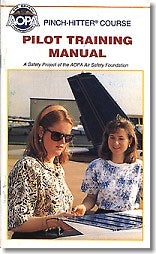 The first session lasted two hours. Frank did his best to notonly put us at ease, but assured us he would answer all our questions. It was surprisingto me to hear that not everyone was as fortunate as I have been to have a flying companionwho includes me in what is happening. One of the students even had to insist that she takethe course, because her husband did not support her taking it. A couple of the studentswere taking it for a second or third time. They were there to sharpen their skills. Most,however, had little prior experience other than at being a passenger. Some were afraid offlying and others feared for the safety of their kids, if something ever happened toDaddy.
The first session lasted two hours. Frank did his best to notonly put us at ease, but assured us he would answer all our questions. It was surprisingto me to hear that not everyone was as fortunate as I have been to have a flying companionwho includes me in what is happening. One of the students even had to insist that she takethe course, because her husband did not support her taking it. A couple of the studentswere taking it for a second or third time. They were there to sharpen their skills. Most,however, had little prior experience other than at being a passenger. Some were afraid offlying and others feared for the safety of their kids, if something ever happened toDaddy.
It became obvious as to why Frank had asked the pilots to leave. With our companionsaround we would have been hesitant to ask the questions we really wanted answered. Hewanted us to be able to communicate openly and frankly. It worked. Before long we wereasking all the questions we had never been able to ask. Frank did a great job at answeringour questions in simple, easy to understand terms. The real beauty of this course is thatit gets a lot of information to you in a short time that is VERY easy, surprisingly easy,to comprehend. During our first session basic aerodynamics, flight and power controls wereexplained. We were encouraged to use terms we were comfortable with, like, wheel insteadof yoke and gas instead of fuel. Tips for power and control settings were given. Simpleexamples like riding a bike were used to explain how and why airplanes did things. We didnot rush through things and Frank spent as much time as needed for us to feel comfortableand to have all our questions answered. Time flew, so to speak, and we were done with thefirst session before we knew it.
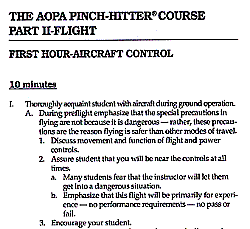 At the end of our first session we were assigned our flight instructors. My instructor,Andy Serrell, was a retired naval aviator with lots of hours of not only flying but,instruction. All of the instructors had years of experience and were hand picked to dothis training. After only a few minutes conversation I felt real comfortable with Andy.Andy and I agreed on our schedule for flying the next day and that night I went to sleeponly to dream all night that I was flying!
At the end of our first session we were assigned our flight instructors. My instructor,Andy Serrell, was a retired naval aviator with lots of hours of not only flying but,instruction. All of the instructors had years of experience and were hand picked to dothis training. After only a few minutes conversation I felt real comfortable with Andy.Andy and I agreed on our schedule for flying the next day and that night I went to sleeponly to dream all night that I was flying!
Doug, Andy and I arrived at North Las Vegas bright and early the next morning. After apreflight, Doug went up with Andy in our plane, a rented Turbo-Arrow we usually flew backthen, to familiarize Andy with the plane and explain and demonstrate its idiosyncrasies.They were back shortly and now it was my turn. It was too late, I couldn't turn back.Nervously, I resigned myself to the fact I had come to learn to be an "emergencyreplacement pilot" and it was my turn in the barrel.
 Andy spent a good deal of time walking around the plane with meand going over and re-enforcing what Frank had covered the previous afternoon. It helpedto calm me down and then it was time. Andy got into Doug's seat and I followed him and gotin my usual place, the "right" seat. We then spent some more time reviewing theinstruments and he did his best to put me at ease.
Andy spent a good deal of time walking around the plane with meand going over and re-enforcing what Frank had covered the previous afternoon. It helpedto calm me down and then it was time. Andy got into Doug's seat and I followed him and gotin my usual place, the "right" seat. We then spent some more time reviewing theinstruments and he did his best to put me at ease.
Well eventually the time came, we went through the checklist, Andy yelled"clear" and fired our bird up. After maneuvering our way out of the flight line,it was my turn to taxi her out to the runway. Frank, Andy and Doug had all warned me howpeculiar it would feel to steer with my feet and they were right! It takes some time toget used to, but I did it. After a preflight run-up we were cleared to take the active andthere I was doing my first assisted take-off. Despite all my concerns, after all thoseyears of watching Doug do it, it was a neat feeling to have my hands on the controls anddoing it myself.
I can't stress enough that this course is designed to make the you feel secure, safeand confident. We spent the first session covering basic flying maneuvers and discoveringhow the plane handles. We didn't do anything scary, just simple maneuvers like going upand down and making shallow turns. It took a lot of concentration, but it was also fun. Iwas actually enjoying myself. I flew us back to the airport and Andy landed the plane, butdescribed to me what he was doing and why and when to do what.
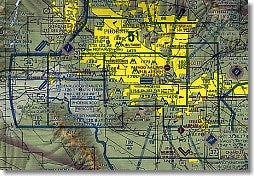 We took a short break and reviewed the first session and then went out forsome navigational work with the VORs. It was easier to taxi this time. This time I did thetake-off all by myself. Andy just followed through in case I needed any help. Flying was alot easier this time and I was surprised at how easy it was to track the VOR. By the timewe returned I was happy, but tired. We debriefed again, had a late lunch and rested a bitbefore it was time to head back to the hotel for more ground school. This time Frankcovered what many of us had really come to learn, how to communicate, navigate and safelyland the plane.
We took a short break and reviewed the first session and then went out forsome navigational work with the VORs. It was easier to taxi this time. This time I did thetake-off all by myself. Andy just followed through in case I needed any help. Flying was alot easier this time and I was surprised at how easy it was to track the VOR. By the timewe returned I was happy, but tired. We debriefed again, had a late lunch and rested a bitbefore it was time to head back to the hotel for more ground school. This time Frankcovered what many of us had really come to learn, how to communicate, navigate and safelyland the plane.
I walked away from the second ground school full of questions and "dumpedcore" to Doug over dinner. It had been a long time since Doug had been in pilottraining, but I was experiencing much of what he had and he did a lot to put my thoughtsand feelings in perspective. I found out that many of the things I was having problemswith, he had also experienced problems with when he was a student pilot. It wasn't justme, it was part of learning to fly. Once again I went on to fly planes all night in mydreams.
The next morning I woke a little stiff and sore. Doug just nodded and assured me thatwas normal as well. The next flying session focused on flying headings and working withthe controllers at busy Las Vegas McCarran airprot. It was great. They were extremely busyand had to vector us all over the place. It couldn't have been better if we had plannedit. I soon felt very comfortable with talking to the controllers and following theirdirections. At this point here was only one thing left to do, LAND!
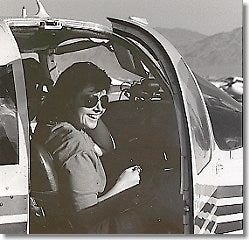 I was ready. We went out to a small field south of Las Vegas. Andy hadtaught me to fly straight and level. So, we made an approach and he had me come right inand fly directly over the runway about 100 feet off the ground and take her back up. Itwas then I knew I could land. We came back around, did a right hand pattern and I landedwith his assistance at the controls. This was it. We taxied around, I took off all bymyself, climbed to 3500 feet and began the pattern for landing. I knew I could do it. Iwent through all the things from ground school and what Andy had taught me: flaps, powersettings, GUMP check, communicating my downwind, base and final (why do they have to callit "final?"). All the while, Andy was talking to me as if he were a controlleron the ground. And then we were down and I had done it without Andy touching the controls!It wasn't the prettiest landing, but neither was it all that bad. The important point wasthat I made it down safe and secure and rolled out straight 'til she stopped. We did a fewmore take-offs and landings. Each one was a little easier than the one before. Then weheaded back to North Las Vegas for my last landing, in front of Doug. Talk about nervous!One small bounce, no problem. I'm not sure who was grinning more when I opened the door,me or Doug.
I was ready. We went out to a small field south of Las Vegas. Andy hadtaught me to fly straight and level. So, we made an approach and he had me come right inand fly directly over the runway about 100 feet off the ground and take her back up. Itwas then I knew I could land. We came back around, did a right hand pattern and I landedwith his assistance at the controls. This was it. We taxied around, I took off all bymyself, climbed to 3500 feet and began the pattern for landing. I knew I could do it. Iwent through all the things from ground school and what Andy had taught me: flaps, powersettings, GUMP check, communicating my downwind, base and final (why do they have to callit "final?"). All the while, Andy was talking to me as if he were a controlleron the ground. And then we were down and I had done it without Andy touching the controls!It wasn't the prettiest landing, but neither was it all that bad. The important point wasthat I made it down safe and secure and rolled out straight 'til she stopped. We did a fewmore take-offs and landings. Each one was a little easier than the one before. Then weheaded back to North Las Vegas for my last landing, in front of Doug. Talk about nervous!One small bounce, no problem. I'm not sure who was grinning more when I opened the door,me or Doug.
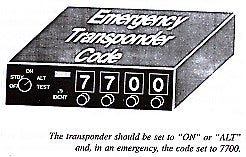 I did what I came to do. I learned how to safely take control ofthe plane and land it if I needed to in an emergency. I learned to not feel shy aboutasking for help if I need it. I have 121.5 and 7700 burned into my memory and have noqualms about asking for help to get to a major airport and bigger runway if I have thefuel. I feel in control.
I did what I came to do. I learned how to safely take control ofthe plane and land it if I needed to in an emergency. I learned to not feel shy aboutasking for help if I need it. I have 121.5 and 7700 burned into my memory and have noqualms about asking for help to get to a major airport and bigger runway if I have thefuel. I feel in control.
The Pinch-Hitter course gave me the knowledge and confidence to handle an emergencysituation. Besides all that, I am now real comfortable taking over from Doug when he asksme to do so. I can also be an even bigger help to him and I now enjoy our flights muchmore. It's fun.
 It took me over ten years to be "convinced" to take this course. It doesn'thurt, it isn't fattening, and I should have done it years ago. Earning my Pinch-Hitter wings was one of my proudest moments
It took me over ten years to be "convinced" to take this course. It doesn'thurt, it isn't fattening, and I should have done it years ago. Earning my Pinch-Hitter wings was one of my proudest moments
To all of you who have objected, refused or simply are afraid to take this course, Ican only tell you one thing. . . JUST DO IT! You'll be glad you did.






